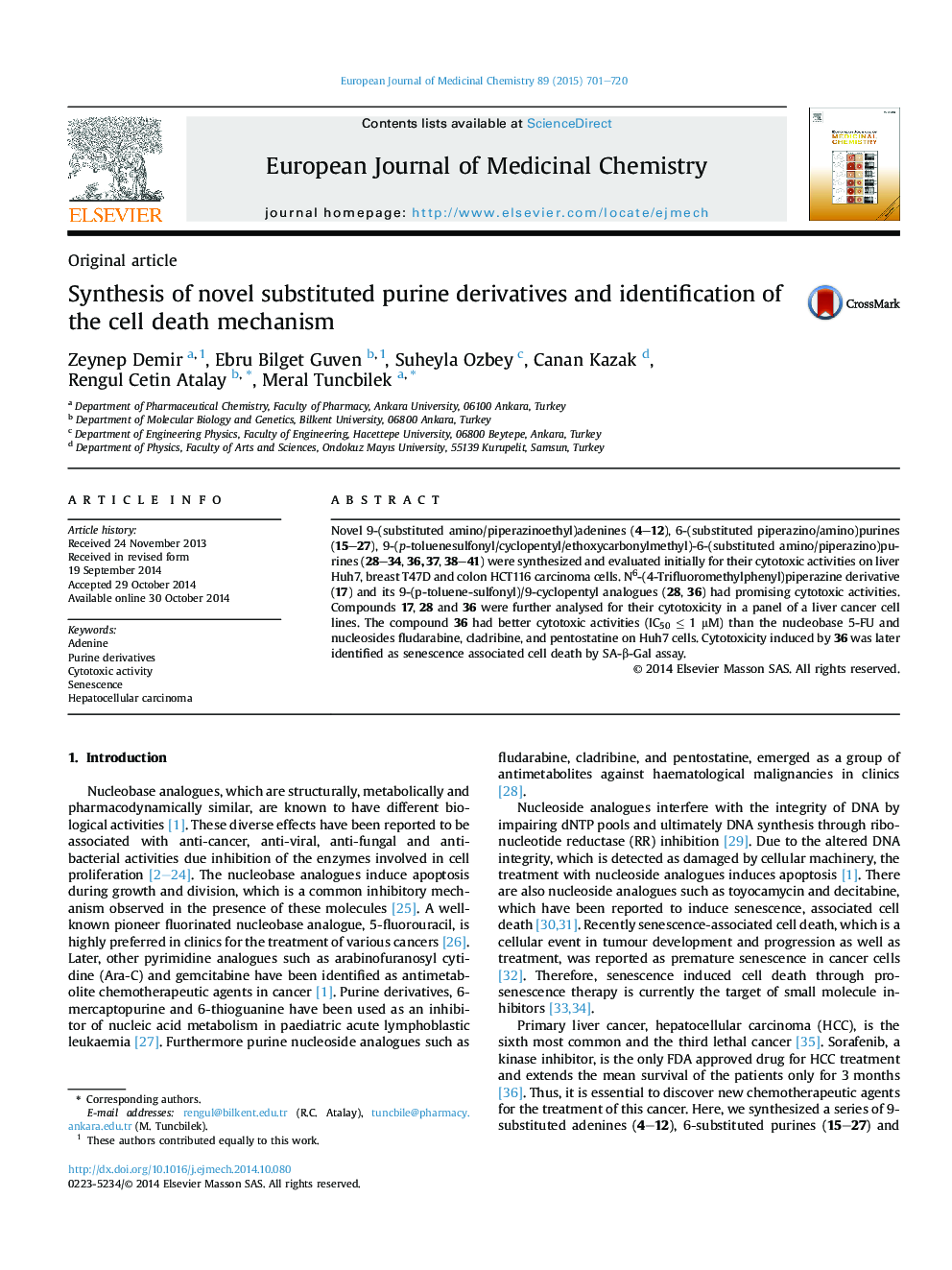| Article ID | Journal | Published Year | Pages | File Type |
|---|---|---|---|---|
| 1392273 | European Journal of Medicinal Chemistry | 2015 | 20 Pages |
•Novel substituted adenine and purine derivatives were designed and synthesized.•Compound 36 displayed the greatest cytotoxic activity with IC50 less than 1 μM.•36 induces senescence associated cell death, which was demonstrated with SAβ-Gal assay.
Novel 9-(substituted amino/piperazinoethyl)adenines (4–12), 6-(substituted piperazino/amino)purines (15–27), 9-(p-toluenesulfonyl/cyclopentyl/ethoxycarbonylmethyl)-6-(substituted amino/piperazino)purines (28–34, 36, 37, 38–41) were synthesized and evaluated initially for their cytotoxic activities on liver Huh7, breast T47D and colon HCT116 carcinoma cells. N6-(4-Trifluoromethylphenyl)piperazine derivative (17) and its 9-(p-toluene-sulfonyl)/9-cyclopentyl analogues (28, 36) had promising cytotoxic activities. Compounds 17, 28 and 36 were further analysed for their cytotoxicity in a panel of a liver cancer cell lines. The compound 36 had better cytotoxic activities (IC50 ≤ 1 μM) than the nucleobase 5-FU and nucleosides fludarabine, cladribine, and pentostatine on Huh7 cells. Cytotoxicity induced by 36 was later identified as senescence associated cell death by SA-β-Gal assay.
Graphical abstractNovel substituted adenine, purine analogues were synthesized. 36 Triggered a time-, dose-dependent decrease in cell growth indexes in all HCC cells. 36 treated Huh7 cells showed senescence associated morphology.Figure optionsDownload full-size imageDownload as PowerPoint slide
